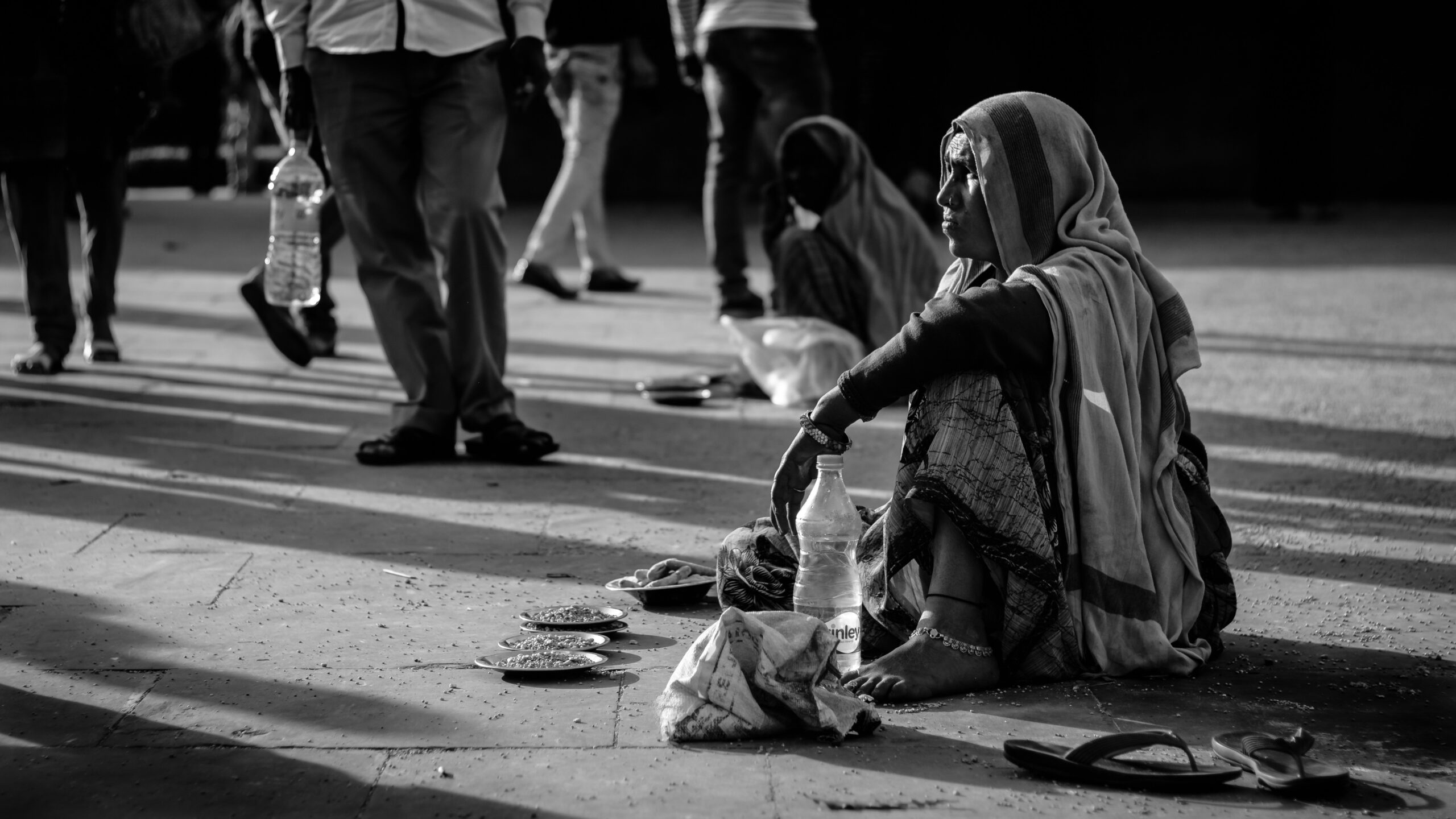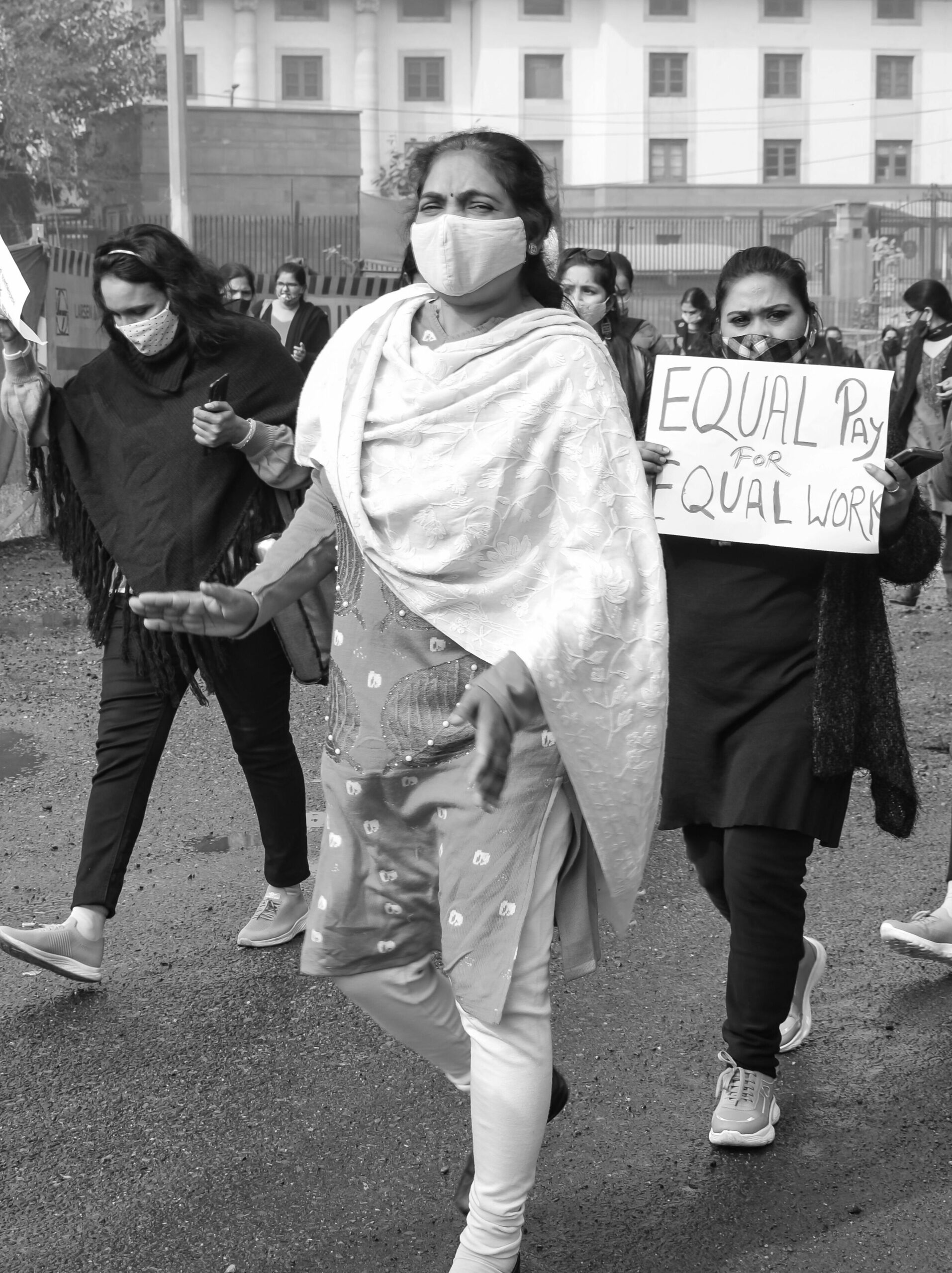Empowerment starts with education. Learning unlocks the doors of confidence, autonomy, and well-informed decision-making. In…
Hunger in India: The Crisis of Malnutrition, Poverty & Inequality (2023–2024)
Our mission at Shaksham Foundation is to raise lives with dignity through the provision of food, education, healthcare, and shelter. In a country where millions are still hungry, poor, and neglected, our work gives hope to the most vulnerable. Together, let’s create a future where no child goes to bed hungry and all souls receive assistance.
Hunger in India: A Crisis We Can't Ignore
Hunger in India isn’t a rural or economic problem—it’s a humanitarian crisisfor millions of people every single day. Even with great advancements in technology and development, a huge percentage of India’s population continues to lack access to basic nutrition.
Hunger in India: Shocking Facts You Need to Know
According to the Global Hunger Index 2023, India is at position 111 out of 125 nations, which puts it in the “serious” hunger category.
- More than 224 million Indians are undernourished (World Food Programme India).
- 1 child out of every 3 children below the age of 5 years is stunted because of chronic malnutrition (NFHS-5, India).
- The National Family Health Survey (NFHS-5) indicates that 35.5% of Indian children aged under five are undernourished and 67% of children aged 6–59 months are anemic.
These figures reflect not just an emergency in health but a collapse in the system of food availability, awareness, and distribution.
Why Are So Many Still Hungry?
Poverty and joblessness: Millions of households cannot afford two daily meals.
Food wastage: Astonishingly, 40% of food grown in India is wasted, states the Food Corporation of India.
Lack of awareness: Underprivileged families remain unaware of nutritional knowledge and medical care.
Unequal distribution: Urban slums and rural areas are usually ignored by the government’s assistance and schemes.
Children Are the Worst Affected
The orphans, especially, and children from poor families are most likely to suffer from hunger and malnutrition. Hunger affects their physical development, mental growth, school attendance, and overall well-being in the long run.
India has close to 30 million orphans, and most of them go hungry to bed every night, as reported by UNICEF and SOS Children’s Villages.
Understanding the Reasons Behind Hunger in India
Hunger is not just the outcome of a lack of food—it’s the product of an intricate network of social, economic, and infrastructural problems. In India, millions sleep hungry each night, not due to the lack of food but due to unequal access, faulty systems, and entrenched poverty.
1. Poverty and Unemployment
The immediate cause of hunger is poverty. With the inability of households to earn a consistent income, the purchase of adequate, nutritious food is a daily struggle. According to the World Bank, a major percentage of India’s population continues to earn below ₹100 per day. With rising inflation and job insecurity, the majority of households are constrained to survival as opposed to nutrition, resulting in undernourished adults and malnourished children.
2. Wastage of Food and Inefficiencies in Distribution
Ironically, India loses almost 40% of the food it produces annually (according to the Food Corporation of India). While there are millions who go hungry, huge quantities of grains, fruits, and vegetables go to waste because of inadequate storage, transportation, and infrastructure. The public distribution system (PDS), which is inefficient, also frequently reaches the undeserving, particularly far-flung or marginalised communities.
3. Malnourishment and Ignorance
Even when there is available food, a lack of nutritional awareness results in unbalanced or inadequate diets. Most households depend on calorie-rich but nutrient-lacking foods, causing chronic undernutrition, particularly in children and pregnant women. Based on the National Family Health Survey (NFHS-5), more than 35% of children under five years of age are underweight, and almost 67% are anaemic, highlighting critical nutritional deficiencies going unfulfilled.
4. Natural Disasters and Urban Migration
Even when there is available food, a lack of nutritional awareness results in unbalanced or inadequate diets. Most households depend on calorie-rich but nutrient-lacking foods, causing chronic undernutrition, particularly in children and pregnant women. Based on the National Family Health Survey (NFHS-5), more than 35% of children under five years of age are underweight, and almost 67% are anaemic, highlighting critical nutritional deficiencies going unfulfilled.
India’s Hunger & Child Nutrition: Latest Stats (2023–2024)
(NFHS-5 Data)
| Indicator | Value | What It Means |
| Stunted Children (Under 5) | 35.5% | Children too short for age because of chronic malnutrition |
| Wasted Children (Under 5) | 19.3% | Children too thin for their height (acute malnutrition) |
| Underweight Children (Under 5) | 32.1% | Children below normal weight for age |
| Severely Wasted (Under 5) | 7.7% | Children with severe thinness who require immediate attention |
| Overweight Children (Under 5) | 3.4% | Children are heavier than recommended for their height |
| Anemic Children (6–59 months) | 67.1% | Children with iron deficiency impacting energy & growth |
| Exclusive Breastfeeding (0–6 mo) | 63.7% | Infants exclusively breastfed in the first 6 months |
| Children Fully Immunized (12–23 mo) | 76.6% | Children who have all routine vaccines |
| Low Birth Weight Rate | 18% | Babies born weighing less than 2.5 kg |
| Children with Severe Acute Malnutrition (2023) | 56,000+ | Children who are admitted to treatment centers throughout India |
Myths About Food Donation You Should Stop Believing
Even with increased awareness, food donation in India is thwarted by misinformation. Let’s bust the most prevalent myths that prevent people from making a positive difference.
Myth |
Reality |
| Donated food is unsafe and unhygienic. | All NGOs, including Shaksham Foundation, adhere to rigorous hygiene standards during food collection and distribution. We only accept and distribute fresh, stored food properly, ensuring safety for all parties. |
| Only cooked food can be donated. | Dry rations, fruits, and packaged food with a good expiry can also be donated. NGOs make use of such items in ration kits for slum families and shelters. |
| Food donation makes people dependent. | Food relief is not a handout—recovery from hunger is about preserving dignity and survival. For orphans, old age homes, and homeless, even a single normal meal can make all the difference. |
| My little contribution won’t count. | A single meal can keep a person from sleeping on an empty stomach. When everyone gets together and does a little, the overall effect is huge. Hunger is conquered one meal at a time. |
| It’s too complicated to identify a trustworthy NGO. | With online platforms and vetted NGOs such as Shaksham Foundation, giving has never been simpler. We offer clear tracking, pickup assistance, and reports for donors. |
| You need a lot of money to help. | You don’t need to be wealthy to make an impact. Donating one meal, sharing extra groceries, or even volunteering your time can help feed someone in need. Every small contribution counts. |
Who We Are: Empowering Lives in Ahmedabad
Shaksham Foundation is a registered Ahmedabad NGO dedicated to transforming the lives of orphans, poor women, elderly citizens, and economically backward families with sustainable support. We are among the topmost non-profit organisations in Gujarat, working diligently to provide necessities like food, education, medical help, and shelter to those who are living in need.
Our Journey and Purpose
Established by a team of energetic young people, Shaksham Foundation was created out of a simple yet compelling idea—no human being should ever sleep with an empty belly or be overlooked. Originating as a grassroots movement, it has evolved into a community-focused organization that is synonymous with food relief drives, orphanages, and healthcare drives reaching out to the last mile of Ahmedabad.
What We Believe In
It is all driven by these core values at the center of what we do:
Dignity – All life is important and worthy of respect.
Compassion – We start with kindness, always.
Sustainability – Our initiatives are made for long-term sustainability.
What Shaksham Foundation Do
We tackle the causes of poverty and vulnerability with targeted initiatives:
Hunger Relief: Morning meals for orphans, food distribution to the homeless, and food leftover collection drives in Ahmedabad.
Education Support: Free learning centers in Behrampura, Jamalpur, and Thaltej; school kits, scholarships, and training in life skills for children.
Medical Assistance: Free health check-ups, medicines, and mobile clinics in slum communities and rural towns.
Women Empowerment: Financial literacy workshops, mentorship, vocational training, and legal aid for disadvantaged women.
By integrating compassion with action, Shaksham Foundation enables poor communities to live healthier, more dignified lives.
Frequently Asked Questions (FAQs)
1. What are the principal causes of hunger in India?
Poverty, unemployment, food wastage, poor awareness regarding nutrition, and inadequate food distribution systems are the key causes of hunger in India.
2. In what ways does hunger impact children most?
Hunger and malnutrition can have a significantly damaging effect on a child’s physical growth, brain development, school attendance, and overall health in the long run, particularly during their early years.
3. What is the role of NGOs in combating hunger in India?
NGOs assist by coordinating food drives, raising public awareness on nutrition, sponsoring orphans and slum residents, and covering gaps left by government initiatives.
4. Is food donation safe and legal in India?
Yes. Donated food is legal and safe if properly handled. Registered NGOs adhere to hygiene practices to maintain food safety and compliance.
5. Can I help if I am unable to donate money?
Yes. You can help by donating excess food, volunteering, raising awareness, or funding logistics such as food pickups and drives.
6. What do I do with my donation?
Your contribution directly feeds children, the elderly, and low-income families with meals, ration kits, and support services in underprivileged communities.
7. What types of food can be donated?
Both cooked and uncooked food items can be contributed. Canned food, dry rations, and fruits with good shelf life are particularly helpful for ration kits.



Comments (0)